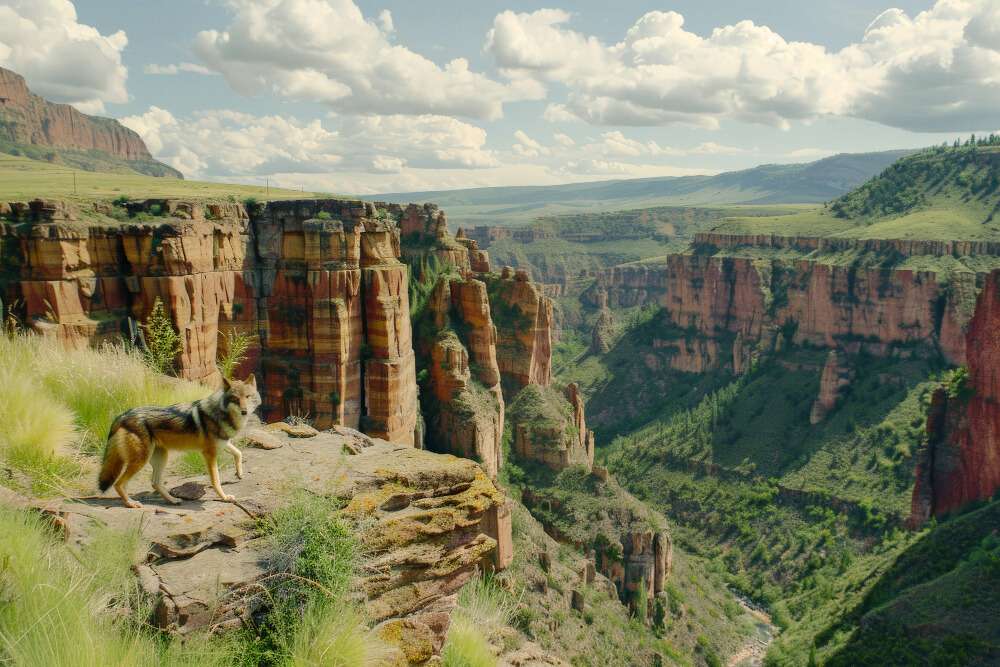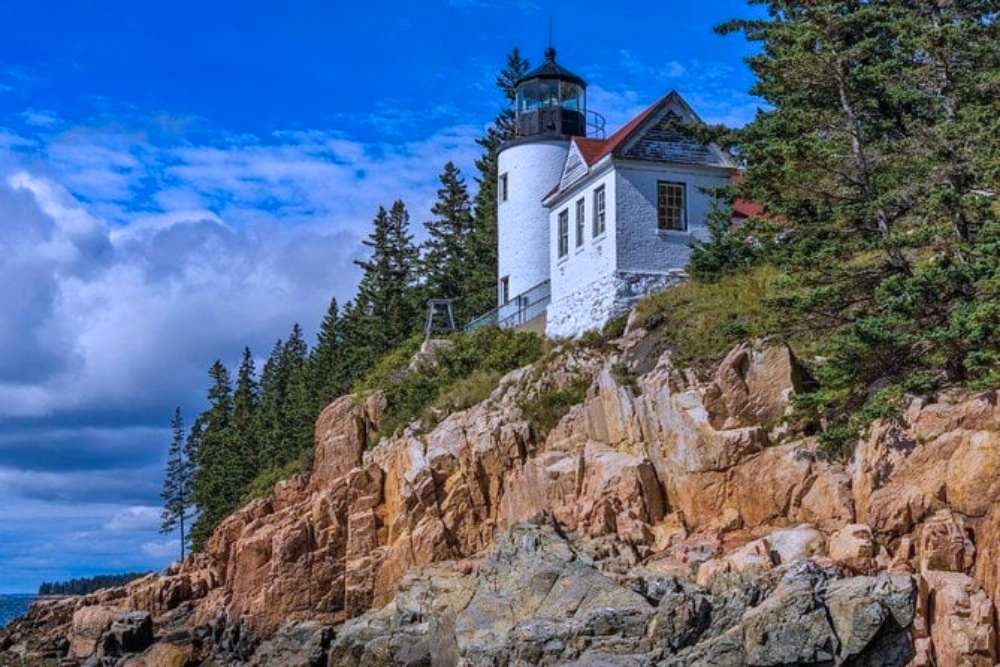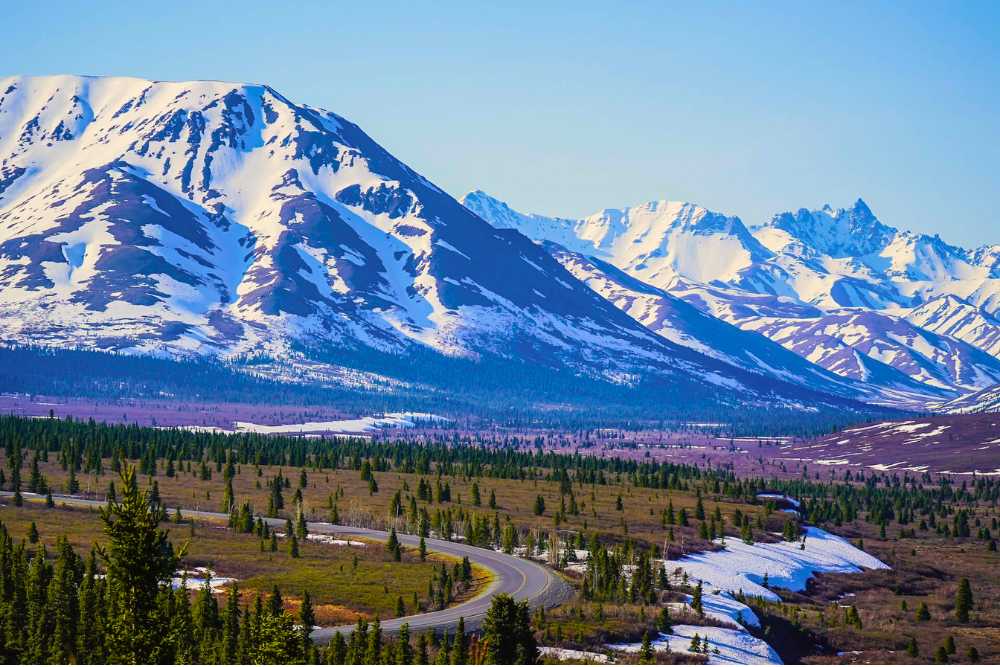15 Best National Parks to Visit in the US for Nature Lovers

There’s a reason millions of people dream of hitting the road to explore America’s national parks. From Yellowstone’s thundering herds of bison to Yosemite’s towering granite walls, there’s no shortage of natural wonders across the best national parks to visit in the US. For nature lovers, these parks are more than just vacation spots, and they’re sanctuaries of awe and inspiration.
Each park tells a story of ancient geologic forces, unique wildlife, and timeless beauty that can leave you speechless and soulful all at once. Picture yourself watching a sunrise set the Grand Canyon aglow or hearing wolves howl under the Northern Lights in Denali. These moments stay with you for the rest of your life.
Let’s journey through the best national parks to visit in the US to make a deep connection with nature. Get ready for friendly anecdotes, insider tips, and inspiring tales from deserts to mountains and everything in between.
“In every walk with nature one receives far more than he seeks.” — John Muir
(Spoiler: A few might even bring a tear to your eye with their beauty!) So grab your hiking boots and sense of wonder – let’s dive in. To make your adventure planning easier, here’s a quick reference table for the best times and highlights of each park we’ll cover:
Best National Parks to Visit in the US You Must Visit
| Park Name | Best Time to Visit | Highlights |
| Yosemite National Park, California | Spring to Fall | Granite cliffs, waterfalls, Half Dome, El Capitan, ancient sequoia trees, diverse wildlife, and over 750 miles of trails. |
| Yellowstone National Park, Wyoming, Montana, Idaho | Summer to Fall | Old Faithful geyser, Grand Prismatic Spring, Grand Canyon of the Yellowstone, bison, elk, wolves, grizzly bears. |
| Grand Canyon National Park, Arizona | Spring and Fall | Immense canyon views, Bright Angel Trail, Mather Point, Desert View, and Colorado River rafting. |
| Zion National Park, Utah | Spring and Fall | Sandstone cliffs, Angels Landing, The Narrows, slot canyons, accessible from Las Vegas. |
| Glacier National Park, Montana | Summer | Rugged mountains, Going-to-the-Sun Road, alpine meadows, glacial valleys, and diverse wildlife like mountain goats and grizzly bears. |
| Rocky Mountain National Park, Colorado | Summer to Fall | Trail Ridge Road, over 300 miles of trails, elk and marmot sightings, camping, and fishing. |
| Arches National Park, Utah | Spring and Fall | 2,000+ natural stone arches, Delicate Arch, red rock landscapes, fins, spires, and stunning sunsets. |
| Olympic National Park, Washington | Summer to Fall | Temperate rainforests, Hoh Rain Forest, coastal tide pools, sea stacks, Roosevelt elk, sea otters. |
| Bryce Canyon National Park, Utah | Spring and Fall | Hoodoos, Queen’s Garden, Navajo Loop, sunrise and sunset views. |
| Acadia National Park, Maine | Fall and Summer | Cadillac Mountain sunrise, 120 miles of hiking trails, granite peaks, diverse wildlife, and coastal beauty. |
| Big South Fork National River and Recreation Area, Tennessee and Kentucky | Spring to Fall | Scenic gorges, sandstone bluffs, Twin Arches, hiking, horseback riding, and paddling along the Cumberland River. |
| Great Smoky Mountains National Park, North Carolina and Tennessee | Spring to Fall | Mist-covered mountains, over 800 miles of trails, historic buildings, waterfalls, rich biodiversity, and Appalachian Trail segments. |
| Grand Teton National Park, Wyoming | Summer and Fall | Teton Range, Hidden Falls, Jenny Lake, wildlife watching, proximity to Yellowstone. |
| Sequoia National Park, California | Summer to Fall | General Sherman Tree, the largest tree, caves, alpine meadows, high mountain peaks, diverse ecosystems, and wildlife. |
| Everglades National Park, Florida | Winter to Early Spring | Subtropical wetlands, mangroves, sawgrass prairies, airboat and kayak tours, alligators, manatees, and endangered species. |
1. Yosemite National Park, California

Yosemite National Park is renowned for its majestic granite cliffs, cascading waterfalls, and ancient sequoia trees. Iconic landmarks like El Capitan and Half Dome attract climbers and hikers from around the world. The park’s diverse ecosystems support a wide range of wildlife, including black bears, mule deer, and over 250 bird species. Visitors can explore over 750 miles of trails, ranging from easy walks to challenging backcountry routes.
2. Yellowstone National Park, Wyoming, Montana, and Idaho

As the world’s first national park, Yellowstone offers a unique combination of geothermal features, abundant wildlife, and stunning landscapes. Highlights include the Old Faithful geyser, the Grand Prismatic Spring, and the Grand Canyon of the Yellowstone. The park is home to a diverse range of species, including bison, elk, wolves, and grizzly bears. In June 2024, Yellowstone confirmed the birth of a rare white bison calf, a symbol of hope and renewal for many Native American tribes.
3. Grand Canyon National Park, Arizona

The Grand Canyon’s immense size and intricate layers of red rock reveal millions of years of geological history. Visitors can hike along the rim, venture into the canyon on trails like the Bright Angel Trail, or take in panoramic views from lookout points such as Mather Point and Desert View. The Colorado River, which has carved the canyon over millions of years, offers opportunities for whitewater rafting and scenic river trips.
4. Zion National Park, Utah

Zion National Park features towering sandstone cliffs, narrow slot canyons, and a diverse array of plant and animal life. Popular hikes include Angels Landing, known for its thrilling heights, and The Narrows, where visitors wade through the Virgin River between steep canyon walls. The park’s proximity to Las Vegas makes it an accessible destination for travelers seeking adventure. The drive from Las Vegas to Zion National Park is only about 155 miles (around 2.5 hours), making it an unforgettable road trip from neon to nature.
5. Glacier National Park, Montana

Glacier National Park is characterized by its rugged mountains, pristine lakes, and remnants of ancient glaciers. The Going-to-the-Sun Road offers breathtaking views and access to trailheads leading to alpine meadows and glacial valleys. The park’s diverse habitats support a range of species, including mountain goats, grizzly bears, and lynx. In recent years, disputes over land ownership and conservation efforts have highlighted the importance of preserving this natural treasure.
6. Rocky Mountain National Park, Colorado

Spanning over 400 square miles, Rocky Mountain National Park boasts a diverse range of ecosystems, from montane forests to alpine tundra. Trail Ridge Road, one of the highest paved roads in North America, provides stunning vistas and access to hiking trails. Visitors can explore over 300 miles of trails, encounter wildlife like elk and marmots, and enjoy activities such as camping and fishing. Accommodations are available in nearby towns, with numerous hotels near Rocky Mountain National Park catering to a range of budgets.
7. Arches National Park, Utah

Home to over 2,000 natural stone arches, Arches National Park showcases the power of erosion and the passage of time. Delicate Arch, perhaps the most famous formation, stands as a symbol of Utah’s natural beauty. Visitors can hike through red rock landscapes, explore fins and spires, and witness stunning sunsets that illuminate the sandstone formations. For those planning an extended stay, several hotels near Arches National Park offer convenient access to the park’s entrance.
8. Olympic National Park, Washington

Olympic National Park encompasses a diverse range of ecosystems, including temperate rainforests, alpine peaks, and a rugged coastline. The Hoh Rain Forest, with its moss-draped trees and lush vegetation, offers a unique experience. Along the coast, visitors can explore tide pools, sea stacks, and the famous Tree of Life, a tree suspended over a coastal bluff. The park’s varied habitats support a wide range of wildlife, from Roosevelt elk to sea otters.
9. Bryce Canyon National Park, Utah

Bryce Canyon is renowned for its unique geological structures called hoodoos, tall, thin spires of rock formed by erosion. The park’s amphitheaters provide panoramic views of these formations, especially striking at sunrise and sunset. Visitors can hike trails like the Queen’s Garden and Navajo Loop, which wind through the hoodoos and offer close-up views of the area. Weather conditions can vary, so it’s a good idea to check the Bryce Canyon National Park weather forecast before planning your visit.
10. Acadia National Park, Maine

Acadia National Park offers a mix of coastal beauty, forested trails, and granite peaks. Cadillac Mountain, the highest point on the East Coast, provides stunning sunrise views. The park’s 120 miles of hiking trails and 45 miles of carriage roads cater to both hikers and cyclists. Acadia’s diverse habitats support a wide range of wildlife, including moose, black bears, and peregrine falcons. As one of the prominent national parks in Maine, Acadia attracts visitors seeking a blend of ocean and mountain experiences.
11. Big South Fork National River and Recreation Area, Tennessee and Kentucky

Big South Fork offers a mix of scenic gorges, sandstone bluffs, and diverse recreational opportunities. Visitors can hike, horseback ride, or paddle along the Big South Fork of the Cumberland River. The area is also home to the Twin Arches, one of the most significant natural bridge formations in the eastern United States. As part of the Big South Fork National River and Recreation Area, this area provides a less crowded alternative for nature enthusiasts.
12. Great Smoky Mountains National Park, North Carolina and Tennessee

As the family visits the national park in the US, the Great Smoky Mountains offers a rich tapestry of biodiversity, mist-covered mountains, and cultural history. The park features over 800 miles of trails, including segments of the Appalachian Trail. Visitors can explore historic buildings, cascading waterfalls, and a diverse array of plant and animal life. The park’s accessibility and variety make it a favorite among families and seasoned hikers alike.
13. Grand Teton National Park, Wyoming

Grand Teton National Park boasts the dramatic Teton Range, pristine lakes, and a wealth of wildlife. Popular activities include hiking to Hidden Falls, kayaking on Jenny Lake, and wildlife watching in the park’s valleys. The park’s proximity to Yellowstone allows visitors to experience two iconic parks in one trip. Grand Teton’s rugged beauty and outdoor opportunities make it a must-visit for nature lovers.
14. Sequoia National Park, California

Home to some of the world’s largest trees, Sequoia National Park offers awe-inspiring encounters with nature. The General Sherman Tree, the largest known living single-stem tree in the world, stands as a testament to the park’s ancient giants. Visitors can explore underground caves, alpine meadows, and high mountain peaks. The park’s diverse elevations support a variety of ecosystems and wildlife.
15. Everglades National Park, Florida

The Everglades is a unique ecosystem of subtropical wetlands, mangroves, and sawgrass prairies. Visitors can explore the park by airboat, kayak, or on foot, encountering wildlife such as alligators, manatees, and a variety of bird species. The park plays a crucial role in water filtration and provides habitat for numerous endangered species. As a UNESCO World Heritage Site, the Everglades highlight the importance of preserving delicate ecosystems.
Don’t Miss This When You Visit
While exploring the breathtaking national parks of the U.S., consider extending your adventure to these captivating destinations:
- Sedona, Arizona: Renowned for its stunning red rock formations and vibrant arts scene, Sedona offers a unique blend of natural beauty and cultural richness.
- Santa Cruz, California: A coastal gem known for its picturesque beaches and lively boardwalk, Santa Cruz provides a perfect mix of relaxation and entertainment.
- Santa Fe, New Mexico: Immerse yourself in the rich history and artistic heritage of Santa Fe, where adobe architecture meets Southwestern charm.
- Naples, Florida: Experience the serene beauty of Naples, offering pristine beaches, upscale dining, and a laid-back atmosphere.
- Savannah, Georgia: Step back in time with Savannah’s historic streets, moss-draped oaks, and Southern hospitality.
Each of these destinations offers its own unique experiences, complementing your journey through America’s national parks. Whether you’re seeking adventure, relaxation, or cultural immersion, these locations provide unforgettable memories.

